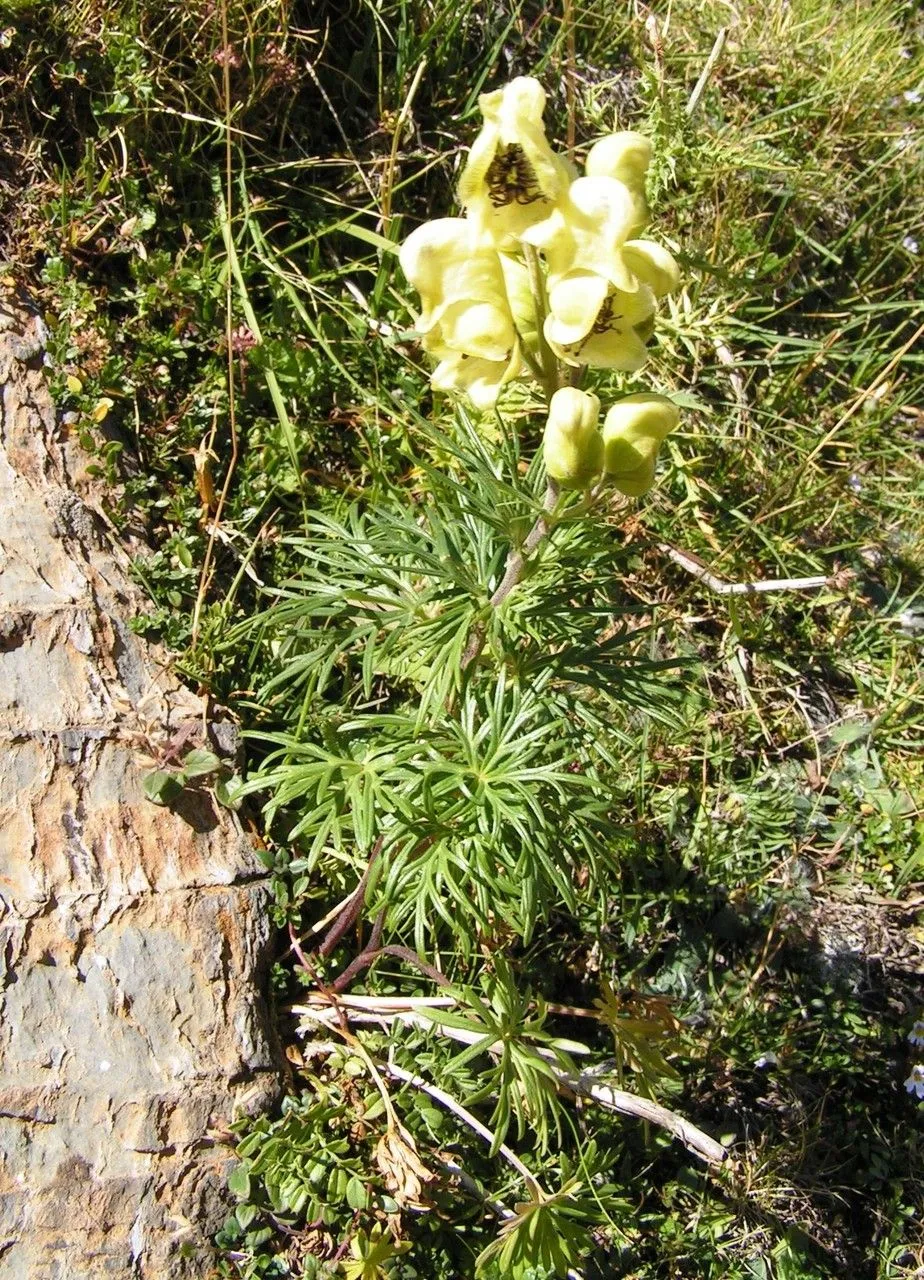
Author: L.
Bibliography: Sp. Pl.: 532 (1753)
Year: 1753
Status: accepted
Rank: species
Genus: Aconitum
Vegetable: False
Observations: Europe to Mongolia
Yellow monkshood, known scientifically as Aconitum anthora, is an intriguing and historically significant plant that has captured the interest of botanists and plant enthusiasts alike. This species, cataloged in 1753 by the botanist Carl Linnaeus in his seminal work “Species Plantarum,” is a noteworthy member of the Ranunculaceae family.
The geographic distribution of yellow monkshood is fascinating and expansive, ranging from various regions of Europe to the remote areas of Mongolia. This wide range suggests that the plant is highly adaptable to different environmental conditions, thriving in diverse climates and terrains.
Characterized by its distinctive yellow flowers, yellow monkshood is not just a visual marvel but also a subject of botanical interest due to its unique properties. The plant has historically been employed in various traditional remedies, although caution is advised due to its toxic nature, a common trait among the Ranunculaceae family.
In summary, Aconitum anthora, or yellow monkshood, is a notable plant species with a rich botanical history and a wide natural habitat. It continues to be a subject of study and admiration in the botanical community due to its diverse characteristics and significant geographical spread.
Swe: gul stormhatt
Eng: yellow monkshood
En: Yellow monkshood
Ca: Tora groga
Cs: Oměj jedhoj
Fi: Kuu-ukonhattu
Fr: Aconit anthore, Anthore, Aconit anthora, Aconit vénéneux, Maclou
De: Gift-Eisenhut, Blaßgelber Eisenhut, Giftheil
Hu: Méregölő sisakvirág
It: Aconito antora, Antora
Kk: Дәрі мәрпі
Pl: Tojad południowy
Ro: Omag galben
Ru: Borets protivoyadnyĭ, Борец противоядный
Es: Acónito amarillo, Acónito salutífero
Sv: Gul stormhatt
Uk: Аконіт дібровний
Taken Sep 4, 2019 by López Figueroa Felix (cc-by-sa)
Taken Sep 3, 2017 by Tela Botanica − Catherine LHOTE (cc-by-sa)
Taken Sep 23, 2014 by Tela Botanica − Marie PORTAS (cc-by-sa)
Taken Aug 16, 2017 by Yoan MARTIN (cc-by-sa)
Taken Sep 7, 2018 by Sílvia Gilart (cc-by-sa)
Taken Sep 17, 2013 by Tela Botanica − Jean-Pascal MILCENT (cc-by-sa)
Taken Aug 16, 2017 by Yoan MARTIN (cc-by-sa)
Taken Jul 17, 2003 by Cédric Jankowiak (cc-by-sa)
Taken Aug 24, 2008 by Tela Botanica − Alain BIGOU (cc-by-sa)
Taken Aug 29, 2021 by Alain rivière (cc-by-sa)
Taken Sep 14, 2011 by Tela Botanica − Jean-Jacques HOUDRÉ (cc-by-sa)
Taken Sep 10, 2011 by Tela Botanica − Catherine MAHYEUX (cc-by-sa)
Taken Sep 23, 2014 by Tela Botanica − Marie PORTAS (cc-by-sa)
Taken Aug 16, 2017 by Yoan MARTIN (cc-by-sa)
Taken Aug 16, 2017 by Yoan MARTIN (cc-by-sa)
Taken Aug 19, 1906 by Tela Botanica − Anne-Marie GRIMAUD (cc-by-sa)
Taken Aug 12, 2014 by Tela Botanica − Paul FABRE (cc-by-sa)
Taken Sep 23, 2014 by Tela Botanica − Marie PORTAS (cc-by-sa)
Taken Sep 23, 2014 by Tela Botanica − Marie PORTAS (cc-by-sa)
Taken Sep 23, 2014 by Tela Botanica − Marie PORTAS (cc-by-sa)
© copyright of the Board of Trustees of the Royal Botanic Gardens, Kew.
Taken Sep 3, 2018 by Eric Rebsamen (cc-by-sa)
Taken Aug 13, 2019 by Llandrich anna (cc-by-sa)
Taken Aug 16, 2017 by Yoan MARTIN (cc-by-sa)
Taken Aug 27, 2019 by huy HO (cc-by-sa)
Taken Apr 29, 2017 by Yoan MARTIN (cc-by-sa)
Taken Jul 11, 2020 by Bjørg H Villholth (cc-by-sa)
Taken Aug 25, 2021 by dan_153 (cc-by-sa)
Taken Aug 20, 2014 by Tela Botanica − Sylvain PIRY (cc-by-sa)
Taken Apr 29, 2017 by Yoan MARTIN (cc-by-sa)
Taken Sep 7, 2021 by MICHEL DUSSERE (cc-by-sa)
Ph maximum: 8.0
Ph minimum: 7.5
Light: 7
Atmospheric humidity: 6
Soil nutriments: 5
Family: Myrtaceae Author: (F.Muell.) K.D.Hill & L.A.S.Johnson Bibliography: Telopea 6: 402 (1995) Year: 1995 Status:…
Family: Rubiaceae Author: Pierre ex A.Froehner Bibliography: Notizbl. Bot. Gart. Berlin-Dahlem 1: 237 (1897) Year:…
Family: Sapindaceae Author: Koidz. Bibliography: J. Coll. Sci. Imp. Univ. Tokyo 32(1): 38 (1911) Year:…
Family: Asteraceae Author: A.Gray Bibliography: Pacif. Railr. Rep.: 107 (1857) Year: 1857 Status: accepted Rank:…
Family: Fabaceae Author: Medik. Bibliography: Vorles. Churpfälz. Phys.-Ökon. Ges. 2: 398 (1787) Year: 1787 Status:…
Family: Aspleniaceae Author: (Cav.) Alston Bibliography: Bull. Misc. Inform. Kew 1932: 309 (1932) Year: 1932…